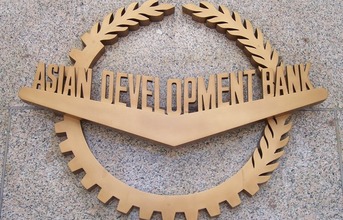
India could replicate or even exceed its best growth performance of the past, the ADB report says.
Spurred in part by a new government with a strong mandate and a wide-ranging reform agenda, the Indian economy is set to benefit from a revival of investment and improved growth in advanced economies, says a new Asian Development Bank (ADB) report.
In an update of its flagship annual economic publication, Asian Development Outlook 2014, ADB raised its forecast for growth of Indian gross domestic product (GDP) in the fiscal year ending 31 March 2016 (FY2015) to 6.3% from 6.0% anticipated in April. ADB maintained its forecast of 5.5% growth in FY2014.
"By advancing its structural reform plans and proceeding with large infrastructure projects, the government can spur private sector investment that will build strong growth momentum for the next few years," said ADB Chief Economist Shang-Jin Wei in launching the new report. "Given its labor cost advantage and vast overseas diaspora networks, by putting the right policy package in place India could replicate or even exceed its best growth performance of the past."
In the first quarter of FY2014, economic activity picked up to 5.7%—the highest pace in nine quarters. Growth was supported by an upturn in domestic demand led by investment—with fixed investment soaring by 7%—and by government spending.
The industrial sector expanded by 4.2%, its fastest pace in more than two years. Strength in industry was led by manufacturing, which grew 3.5% after contracting in three of the previous four quarters. After declining for most of FY2013, capital goods production rebounded strongly in the first quarter of FY2014, which bodes well for future investment.
Positive developments are offset by slow growth in agriculture following a delayed and uneven monsoon, with cumulative rainfall to August at 18% below normal. Summer crop sowing was down 6.3% from a year earlier. Weak agriculture growth in the second and third quarters of FY2014 will likely mean lower spending by rural consumers.
The report says consistent expansion of investment is needed to jumpstart economic growth, and notes there have been few announcements of large new investment projects in the first half of 2014. Recent reforms such as easing environmental and forest clearances for mines, roads, power stations, and irrigation systems, and expanding the role of the government's project monitoring group, will help speed the implementation of projects in the pipeline. Proposed labor reform to improve the investment climate is awaiting parliamentary approval.
These initiatives are expected to invigorate investment, mostly in the second half of FY2014 and in FY2015. The central bank's business expectation index in the first quarter of FY2014 reached its highest level in six quarters, reflecting improved sentiment on production, order books, exports, capacity utilization, and profit margins.
The report also emphasizes that achieving sustainable growth will require bolder reforms to address land-acquisition issues in order to balance the needs of industry and landowners, streamline regulations and business processes by cutting red tape, and implement a uniform goods and services tax.
END

































